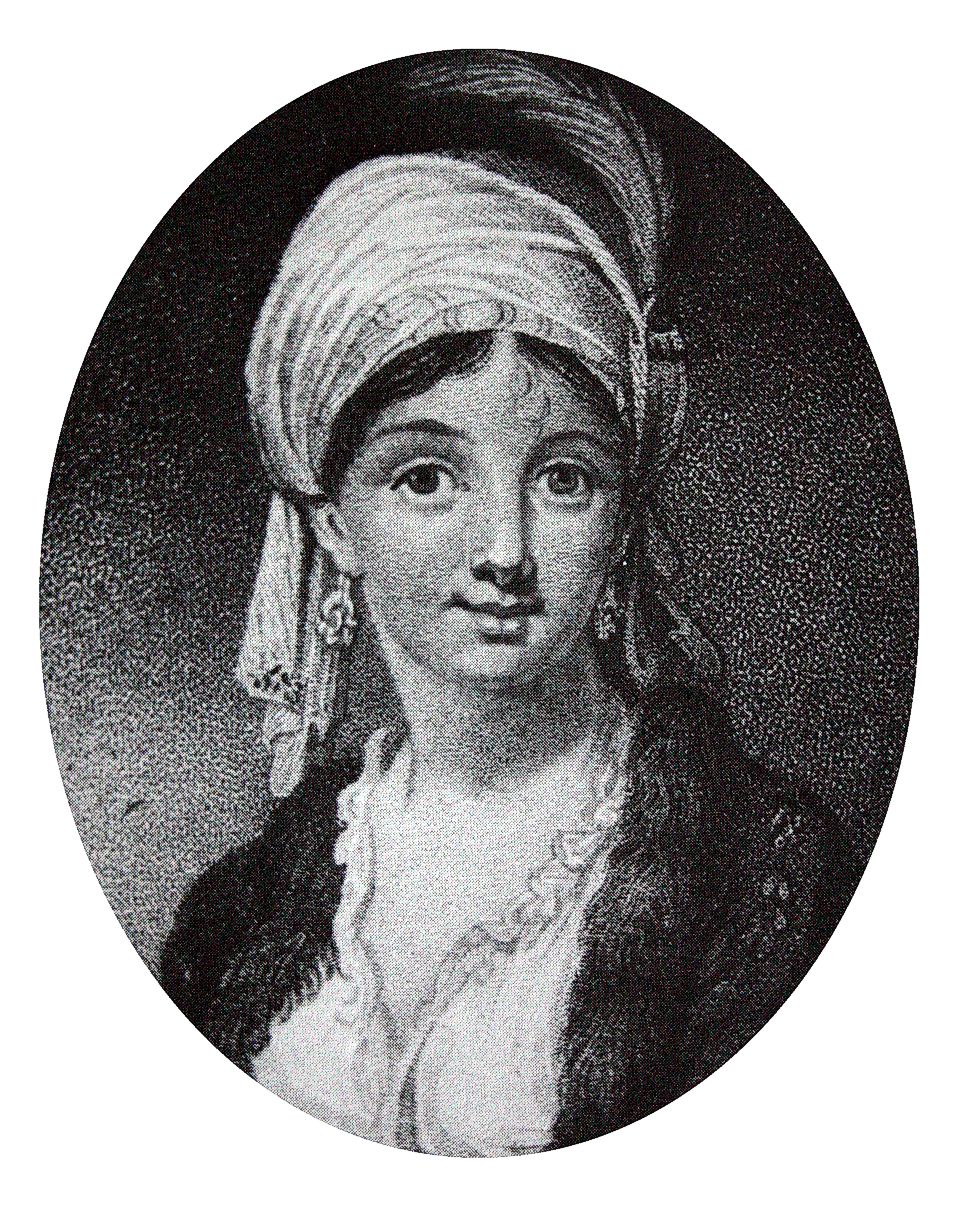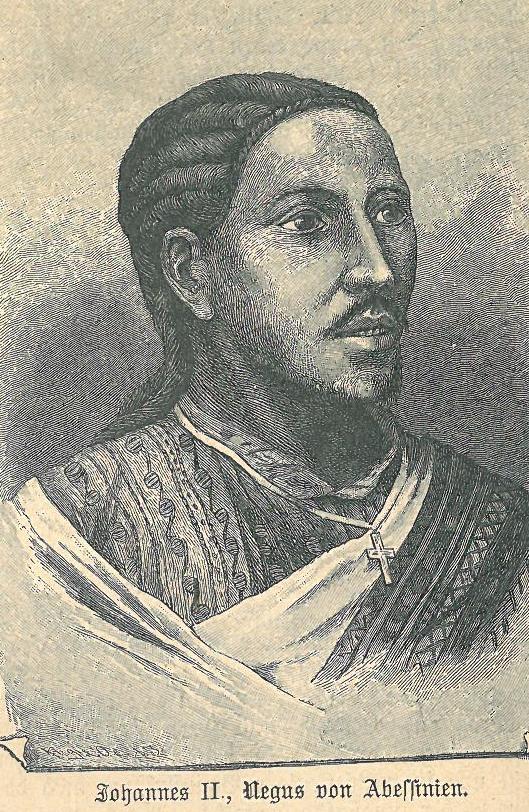|
Haile Maryam Gebre
Haile Maryam Gebre of Semien, Horse name: Abba Dammana (lit: Father of the Cloud) was an early 19th century governor of Semien, Welkait and Wogera. Haile Maryam tried to hold his hereditary possessions in the face of continuous pressure from rival lords during Ethiopia's Zemene Mesafint era. He is remembered as the guardian of Waldeba monastery. Ancestry Haile Maryam's family originated from the Semien mountains and belonged to the Orthodox Christian Amharas. His mother was Sahlitu Kefle Iyesus; and his father was Ras Gebre of Semien, the ruler of Semien, Tsegede, Welkait and Wogera. His sister Teshen Gebre was one of the wives of Emperor Tekle Giyorgis I. Life Yejju invasion In 1812 according to Nathaniel Pearce's journal, Ras Gugsa of Yejju ordered his head general Ackly Marro to wage war against Haile Maryam's father, Ras Gebre of Semien. However, Ras Gugsa's expansionist drive to subdue Semien came to an end when Haile Maryam defeated his retainer Woldi Comfu in ... [...More Info...] [...Related Items...] OR: [Wikipedia] [Google] [Baidu] |
Horse Name
A horse name is a secondary noble title or a popular name for members of Ethiopian royalty; in some cases the "horse names" are the only name known for a ruler. They take the form of "father of X", where "X" is the name of the person's warhorse The first evidence of horses in warfare dates from Eurasia between 4000 and 3000 BC. A Sumerian illustration of warfare from 2500 BC depicts some type of equine pulling wagons. By 1600 BC, improved harness and chariot designs .... Some known horse names of Ethiopian nobility include: Bibliography * Mehari, Krista. 2007. Throne names, pen names, horse names, and field names: A look at the significance of name change in the Ethiopian political sphere* Pankhurst, Richard. 1989. The Early History of Ethiopian Horse-Names. ''Paideuma'' 35, pp. 197–206. * Mahatama-Sellasie Walda-Masqal. 1969. A Study of the Ethiopian Culture of Horse Names. ''Journal of Ethiopian Studies'' Vol. 7, No. 2, pp Notes References Et ... [...More Info...] [...Related Items...] OR: [Wikipedia] [Google] [Baidu] |
Gigar
Gigar ( gez, ጊጋር; – 26 November 1832) was Emperor of Ethiopia intermittently between 1821 and 1830, and purportedly a member of the Solomonic dynasty. Reign According to Samuel Gobat, who met with Gigar (whom he called "Guigar") while a missionary in Ethiopia, Gigar had been a monk for many years, when on the death of his brother Iyoas II he was proclaimed Emperor. Although he "laid aside the cowl of St. Anthony, and assumed the crown and title of sovereignty," Gobat notes that "the first was much more becoming his character, and far more suitable to the energies of his mind." At the time Gobat met Gigar, the Emperor was said to be 86 years old, although Gobat thought that Gigar "did not appear to be more than sixty-five or seventy." Gigar was largely a figurehead, made Emperor by ''Ras'' Marye of Begemder and chief of the Oromo. He was deposed by ''Dejazmach'' Haile Maryam, governor of Semien, in April 1826, who set Baeda Maryam III on the throne, but after a few ... [...More Info...] [...Related Items...] OR: [Wikipedia] [Google] [Baidu] |
Yimam Of Yejju
Yimam of Yejju (also transliterated Imam; died 1828) was a ''Ras'' of Begemder and ''Enderase'' (regent) of the Emperor of Ethiopia. He was the son of Gugsa of Yejju. Upon succeeding his father Gugsa as ''Ras'' when Gugsa died in 1825, Yimam was challenged by his brother Marye, who staged an open revolt. According to Trimingham, Ras Yimam openly supported Islam against the local Ethiopian Church. He also grew so annoyed at Abuna Qerellos III's intervention in the doctrinal dispute over the nature of Christ in support of the '' Sost Lidet'', that he banished the Abuna to the monastery in Lake Hayq, where Abuna Qerellos remained until his death (circa 1828). While Ras Yimam was away in Gojjam campaigning against ''Dejazmach'' Goshu Zewde, Dejazmach Haile Maryam marched from Semien to Gondar where replaced Emperor Gigar with his own choice, Baeda Maryam. When Yimam heard of this, he returned by way of Dengel Ber, pursuing ''Dejazmach'' Haile Maryam as far as Waldebba where ... [...More Info...] [...Related Items...] OR: [Wikipedia] [Google] [Baidu] |
Mikael Sehul
Mikael Sehul (born Blatta Mikael; 1692 – 1784) was a nobleman who ruled Ethiopia for a period of 25 years as regent of a series of weak emperors. He was also a Ras or governor of Tigray 1748–71 and again from 1772 until his death. He was a major political figure during the reign of Emperor Iyasu II and his successors until almost the time of his death. The Scottish explorer James Bruce met Mikael during his stay in Ethiopia, and recorded the following description of the Ras when he granted Bruce an audience: We went in, and saw the old man sitting upon a sofa; his white hair was dressed in many short curls. He appeared to be thoughtful, but not displeased; his face was lean, his eyes quick and vivid, but seemed to be a little sore from exposure to the weather. he seemed to be about six feet high, though his lameness made it difficult to guess with accuracy. His air was perfectly free from constraint, what the French call ''degagée''. In face and person he was liker my learn ... [...More Info...] [...Related Items...] OR: [Wikipedia] [Google] [Baidu] |
Tembien
Tembien (Tigrigna: ተምቤን) is a historic region in Tigray Region and former provinces of Ethiopia. It is a mountainous area of that country. During the reforms in 1994–95, the old provinces were replaced with regions, zones and woredas. The area of the former province is now split over the woredas of Dogua Tembien and Kola Tembien. It was located east of the Semien Province and north of Abergele, a historic district of the Begemder province. On the east, it was bordered by the Enderta Province. The original capital of the province was Melfa, west of the current town of Hagere Selam; later on Abiy Addi, nowadays located in Kola Tembien (''Lower Tembien''), became the capital. The region reached a highpoint in the Tsatsen mountains at 2828 meters above sea level, just south of Hagere Selam. Prehistory Tembien holds numerous prehistoric sites, which have been dated to the Middle Stone Age in Ayninbirkekin, or Pastoral Neolithic in Aregen and Menachek. The Dabo Zellel ... [...More Info...] [...Related Items...] OR: [Wikipedia] [Google] [Baidu] |
Gebre Mikael
Gebre ( gez, ገብረ, ''Gäbrä'') is a common masculine Ethiopian and Eritrean name, meaning "servant" in Ge'ez. It is used as both a stand-alone given name and, frequently, as a prefix (or stem) in religiously themed compound names; e.g. Gebreselassie ("Servant of the Trinity"), Gebremeskel ("Servant of the Cross"), or Gebremariam ("Servant of Mary"). Gebru is a variant, often seen in Tigrinya. As with other such compound names, when written in transliteration in a Latin script, it is often abbreviated as "G/" (e.g. G/Selassie for Gebreselassie). It may likewise also be transliterated with a hyphen or a space connecting it to the root, potentially obscuring the nature of the name. List of people named Gebre or variant *Afevork Ghevre Jesus (1868–1947), Ethiopian writer, wrote the first novel in Amharic * Ghebreselassie Yoseph ( late 20th century), Minister of Finance of Eritrea from February 1997 to 2001 * Bogaletch Gebre (born July 27, 195x, exact year unknown), Ethiopia ... [...More Info...] [...Related Items...] OR: [Wikipedia] [Google] [Baidu] |
Ras (title)
Ras ( compare with Arabic Rais or Hebrew Rosh), is a royal title in the Ethiopian Semitic languages. It is one of the powerful non-imperial titles. Historian Harold G. Marcus equates the Ras title to a duke; others have compared it to "prince".''E.g.'', Don Jaide,An Etymology of the word Ras-Tafari – By Ras Naftali, Rasta Liveware, June 2, 2014; accessed 2019.06.24. The combined title of Leul Ras (Amharic: ልዑል ራስ) was given to the heads of the cadet branches of the Imperial dynasty, such as the Princes of Gojjam, Tigray, ''Ras'' Tafari Makonnen and the Selalle sub-branch of the last reigning Shewan Branch, and meaning "Lord of Lords", the highest title of lord. Historic Ras * Ras Wolde Selassie (1736 - 1816) * Ras Sabagadis Woldu (1780 – 1831) * Ras Alula (1827 – 1897) *Ras Gobana Dacche (1821 – 1889) *Ras Mekonnen Wolde Mikael (1852-1906) * Ras Mengesha Yohannes (1868-1906) * Ras Araya Selassie Yohannes (1869/70-10 June 1888) * Ras Sebhat Aregawi (1892- ... [...More Info...] [...Related Items...] OR: [Wikipedia] [Google] [Baidu] |
Abergele (Ethiopian District)
Tanqua Abergele ( ti, ጣንቋ ኣበርገለ, amh, አበርገሌ) is one of the Districts of Ethiopia, or ''woredas'', in the Tigray Region of Ethiopia. Part of the Mehakelegnaw Zone, Abergele is bordered on the south by the Wag Hemra Zone of Amhara Region, then by the Tekezé River on the west which separates it from North Gondar Zone of Amhara Region, on the north by Kola Tembien, on the east by Degua Tembien Dogu'a Tembien (, "Upper Tembien", sometimes transliterated as Degua Tembien) is a woreda in Tigray Region, Ethiopia. It is named in part after the former province of Tembien. Nowadays, the mountainous district is part of the Southeastern Tigray ... and on the southeast by the Debub Misraqawi Zone, Debub Misraqawi (South Eastern) Zone. The administrative center of this woreda is Yechila; other towns in Abergele include Agbe, Sele and Jijike. Abergele is one of the low lying districts of central Tigray Region, Tigray and the Tanqua River, which originates near Hagere ... [...More Info...] [...Related Items...] OR: [Wikipedia] [Google] [Baidu] |
Maru Of Dembiya
Maru may refer to: People * Maru (given name), a Spanish given name, a shortened form of Maria Eugenia * Maru (surname), a surname of Indic origin * Maru (mythology), a Māori war god * Ngāti Maru (other), several Māori tribes of New Zealand Places * Maru, Shwegu, a village in Kachin State, Burma * Maru, Estonia,a village in Halliste Parish, Viljandi County, Estonia * Maru, Iran (other) * Maru (Irbid), a village in Irbid, Jordan * Maru, Kathmandu, a market and ceremonial square in Kathmandu, Nepal * Maru, Nigeria, a Local Government Area in Zamfara State * Maru-Aten, a palace or sun-temple in Armarna, Egypt * Maru Pradesh, a region in the Indian state of Rajasthan * Mount Maru (other) (丸山), the name for several mountains on Hokkaidō, Japan Language * In Japanese ''maru'' (kanji: , hiragana: ), means ''circle''; see ** ''Marujirushi'' (, correct mark); the opposite of ''batsu'' (×) ** Handakuten (, a Japanese diacritical mark ( ゜) * Maru ... [...More Info...] [...Related Items...] OR: [Wikipedia] [Google] [Baidu] |
Dejazmach
Until the end of the Ethiopian Empire, Ethiopian monarchy in 1974, there were two categories of nobility in Ethiopia and Eritrea. The Mesafint ( gez, መሳፍንት , modern , singular መስፍን , modern , "prince"), the hereditary nobility, formed the upper echelon of the ruling class. The Mekwanint ( gez, መኳንንት , modern , singular መኰንን , modern or am, መኮንን , "officer") were the appointed nobles, often of humble birth, who formed the bulk of the aristocracy. Until the 20th century, the most powerful people at court were generally members of the ''Mekwanint'' appointed by the monarch, while regionally, the ''Mesafint'' enjoyed greater influence and power. Emperor Haile Selassie greatly curtailed the power of the ''Mesafint'' to the benefit of the ''Mekwanint'', who by then were essentially coterminous with the Ethiopian government. The ''Mekwanint'' were officials who had been granted specific offices in the Abyssinian government or court. Higher r ... [...More Info...] [...Related Items...] OR: [Wikipedia] [Google] [Baidu] |



